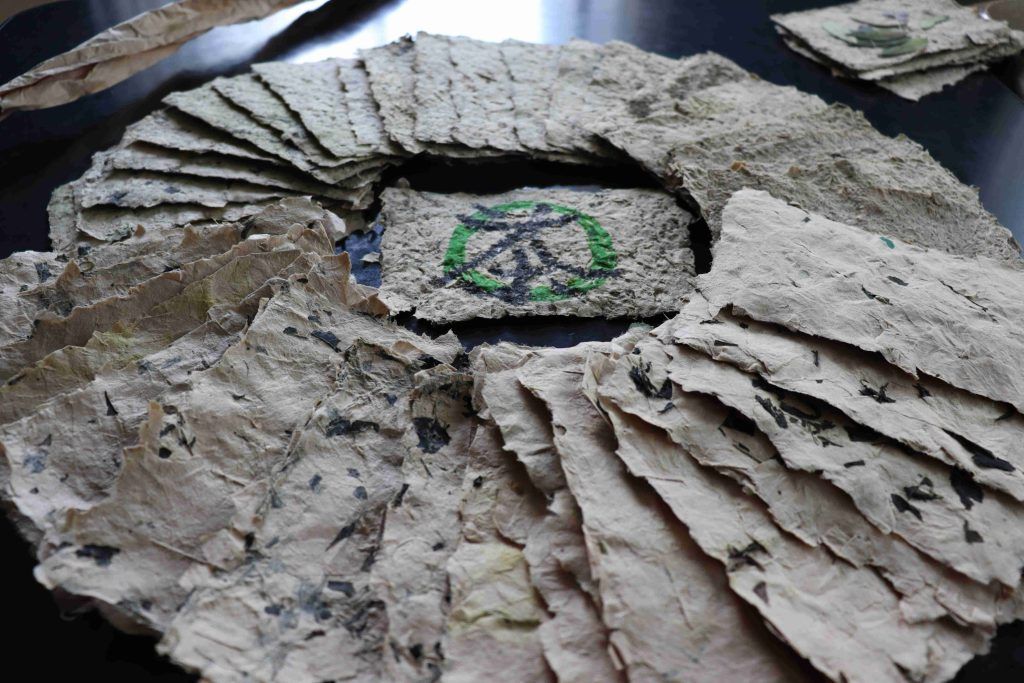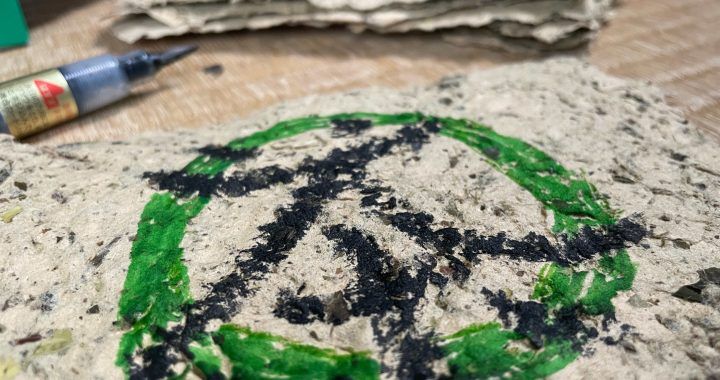A study on the possibiliteas to upcycle tea leaves in the process of paper making (Summer 2025)
Hey there my dear readers! Nice of you to come along to my blog page, I am Mareike (#203). Please take a seat and explore with me the difficult and sometimes very smelly journey of recycling infused tea to create unique and useful artworks out of tea leaves!
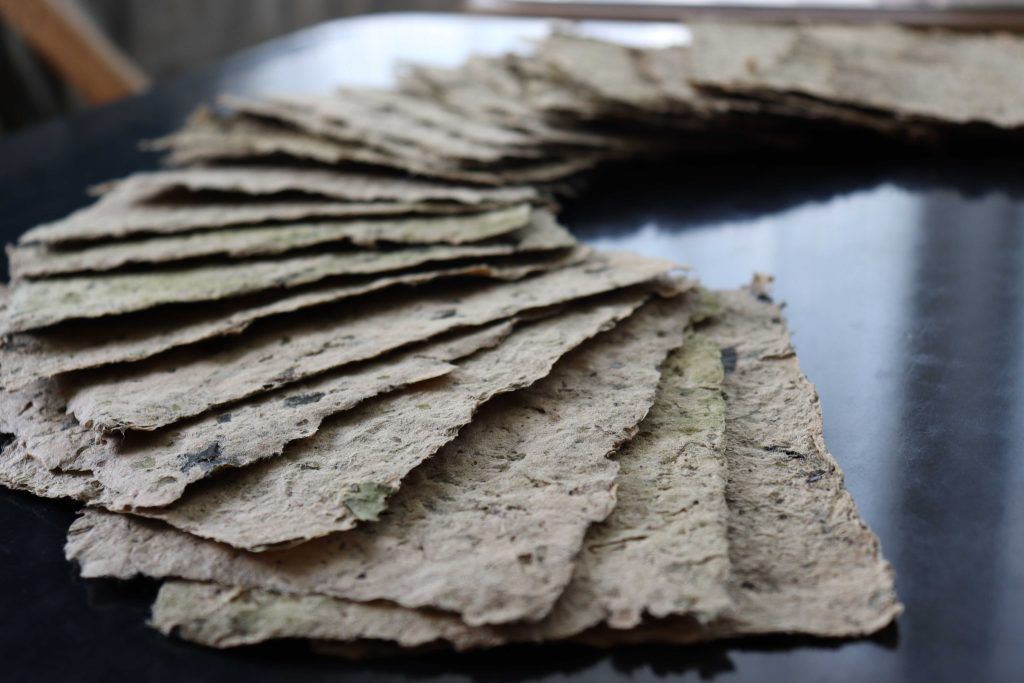
But how did I get to this crazy idea in the first place? When I arrived at Obubu Tea Farms, I was amazed to find out about the tea tours going on nearly every day, each time brewing eleven teas for 1 to 42 people (at least in my time here, I heard legends of a 100 people tour). Apart from the immense dish cleanup work afterwards (lord praise the new dishwasher!) there are always a lot of used tea leaves getting thrown out afterwards. Sure thing, all of them have been brewed for at least one time, some even being served as salad. But still there are at least the teas from sample trays on the tables, which are thrown out unbrewed. I sometimes tried drinking a mix brew of them all or including them in daily cooking, but that was no long-term solution (tea salad is no option for my daily mealtime). Also, in Wazuka, although there are six different trash bins for waste separation, plant based waste like tealeaves don’t get separated but just get burned. For my German mind, that just wasn’t an option.
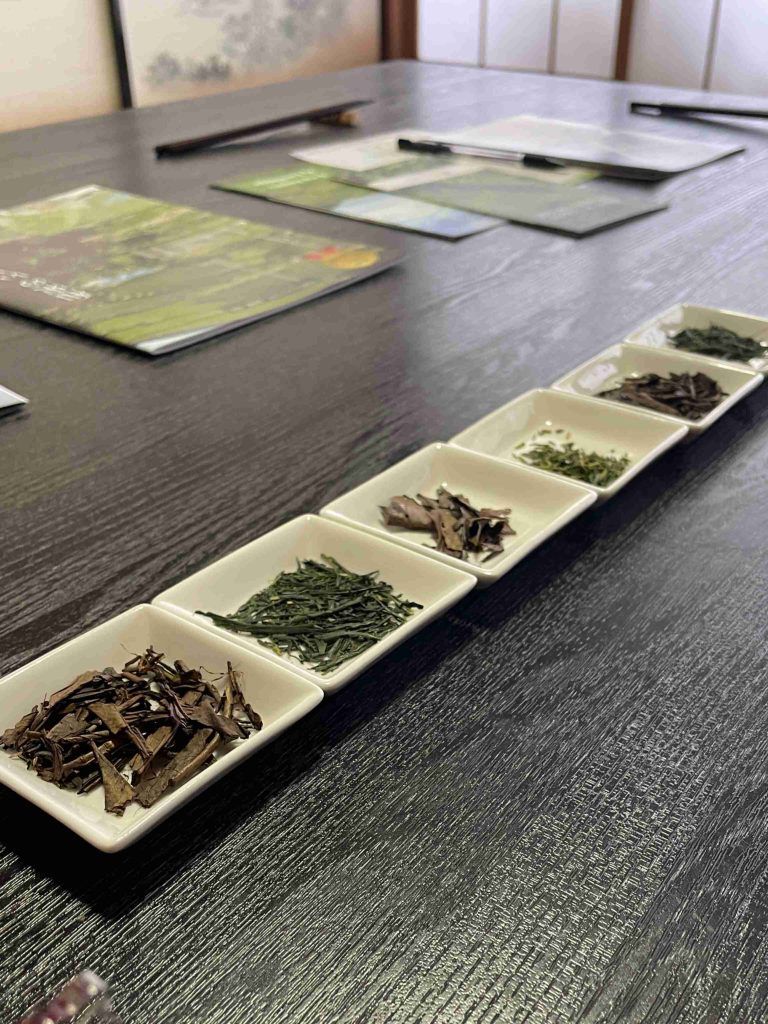
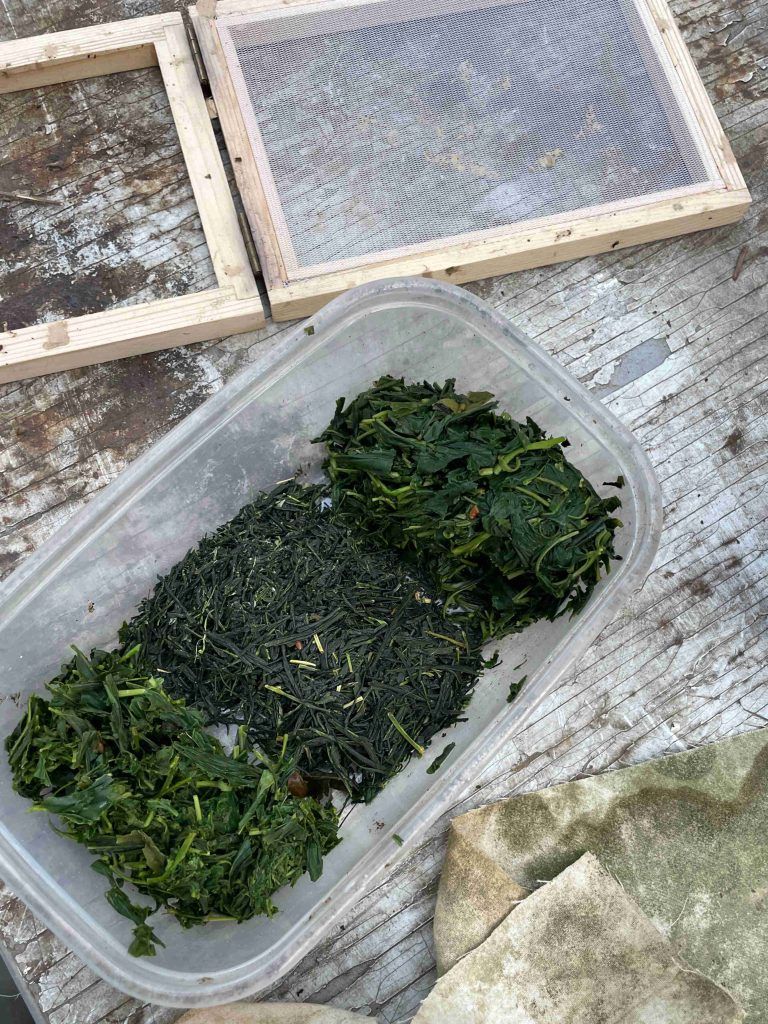
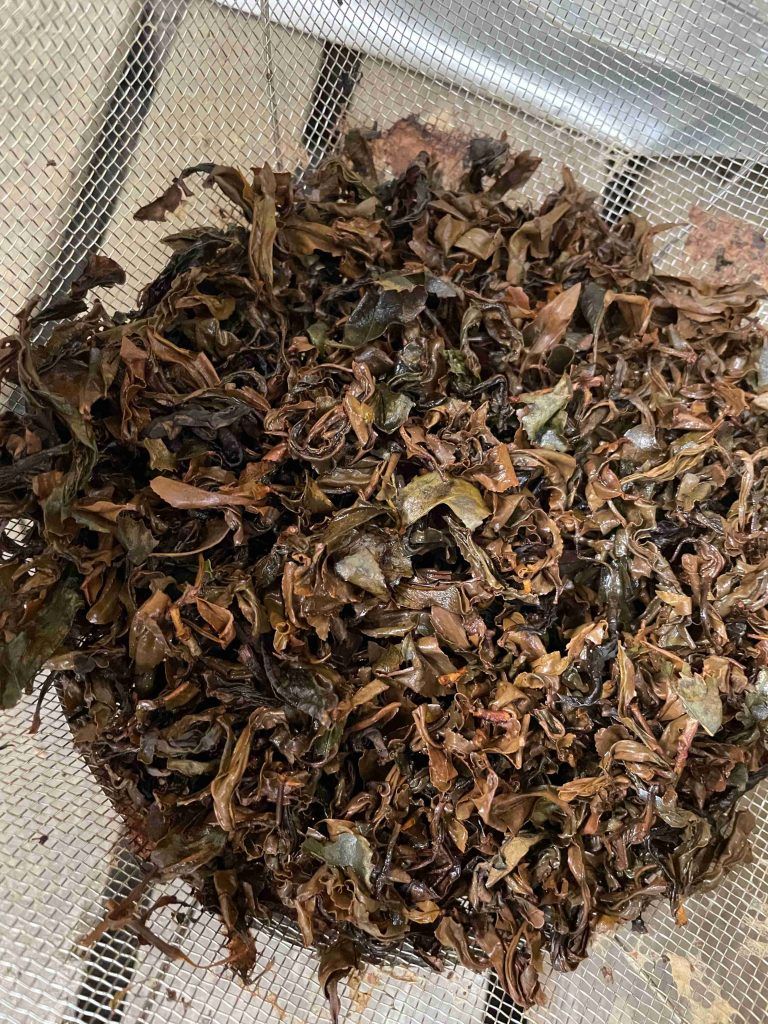
I really wanted to reuse these tea leaves and make something useful out of them. It is amazing how Chinese or Taiwanese teas can go for over ten brews while most Japanese teas are just no good after a maximum of four brews. So I needed another slightly downcycled approach to it. Since I am a big book lover (it was a truly hard decision not to take any books with me to Obubu) and I like to craft things by myself, this idea was born. I wanted to turn these old leaves into new leaves: Paper leaves.
So what material do you need for papermaking? I made one small experiment with only using tea leaves but very quickly realised that this is not going to work. For paper you need certain natural fibers to stick together and form an even fabric. Maybe it would be possible to get these fibers out of tea but with my private resources this would not be possible. You would need a real lab with all kinds of chemicals and crazy machines in it and then guests would probably start asking questions, so I tried something else: I wanted to use some old newspaper as the basis for my paper and mix them with the tea.
In Obubu office, there is not a lot of paper used and also no newspaper anymore (and I didn’t want to use laptops and iPads), so I was really happy to find a bunch of old teabags I could use. And I am not talking about the small ones to put in your teacup, also not the big ones used to carry the freshly harvested leaves, but the ones in which we pack up to 20kg of processed tea to store them before packing in small customer bags of 50g or 100g. So I got these big brown bags which honourably have served the teaquest in keeping the leaves fresh and safe before sending them off to the next smaller packing, ready to retire after their fulfilled life. These veterans I put back into the game by giving them a new purpose, now working even closer to the holy subject they gave their life for keeping safe before, the tea leaves.
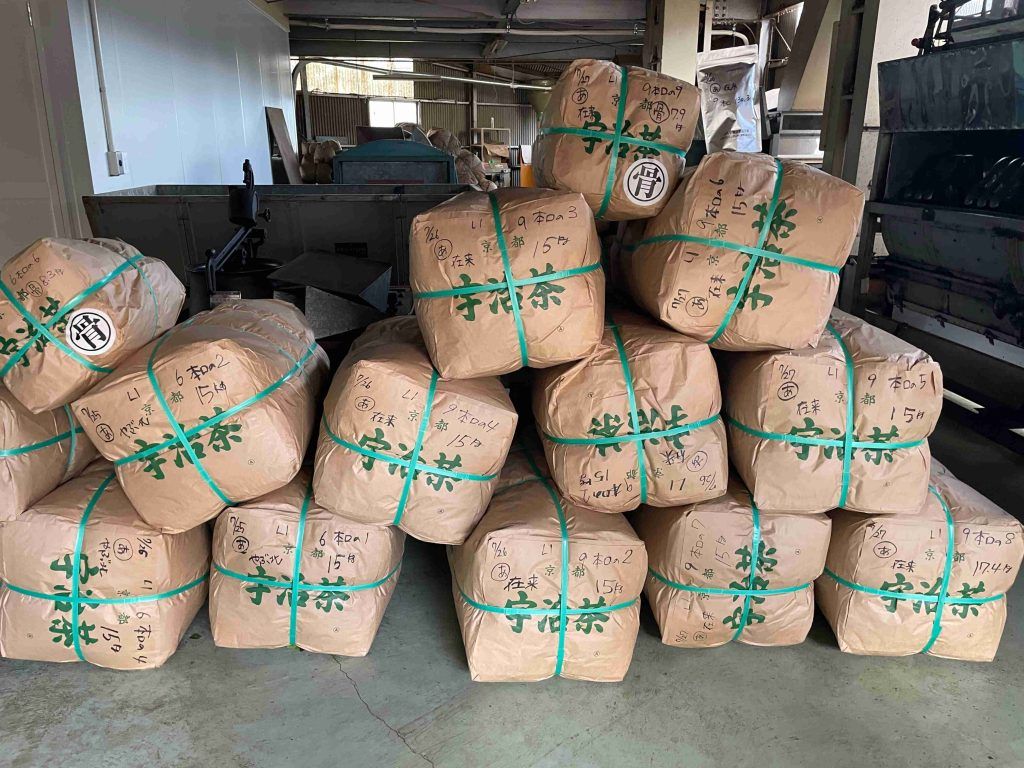
Now I got my natural fiber, already preprocessed and proven to make paper out of it. I just needed to destroy it to create something new. So I started with ripping the first bag apart in many small pieces (a truly satisfying task), putting them into water (~ 5L) and then blended them. I can’t emphasize enough on the importance of using a lot of water and just a bit of paper and listening to your blender. He was not made for this job, so when using him you must work in many small steps, check his knife for stuck pieces and give him a lot of breaks. He isn’t fond of the Japanese summer heat either. After blending, I just closed the bucket up and let it simmer outside in the heat for about 4 days. I blended then once again until I was happy with the resulting consistency.
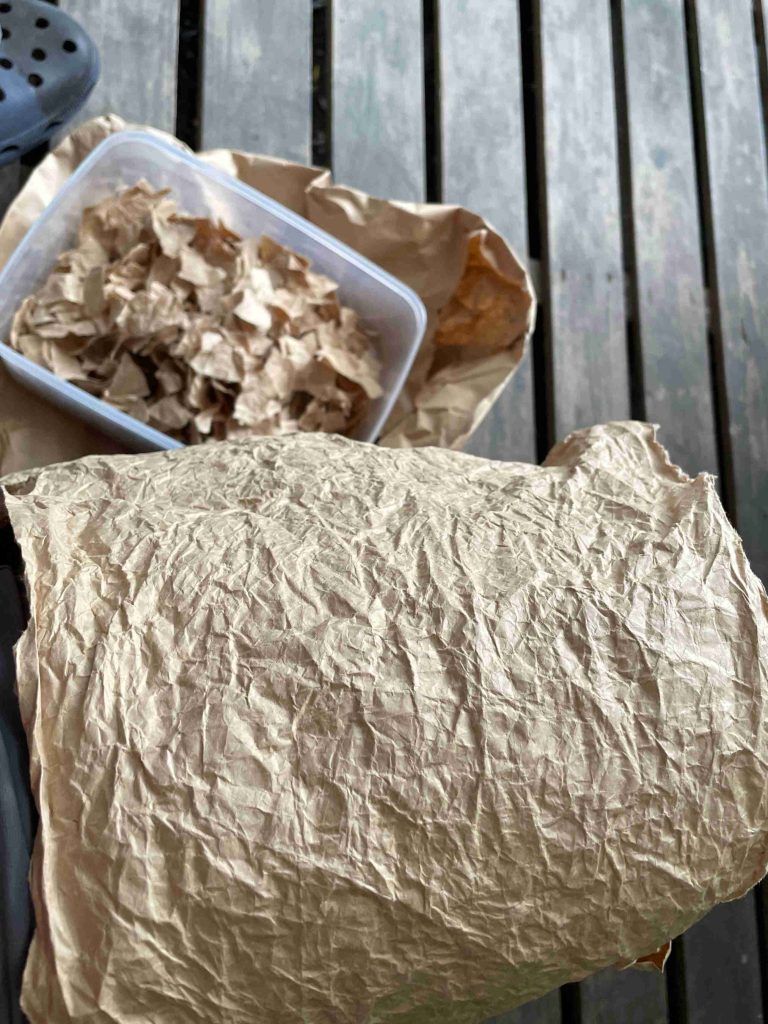
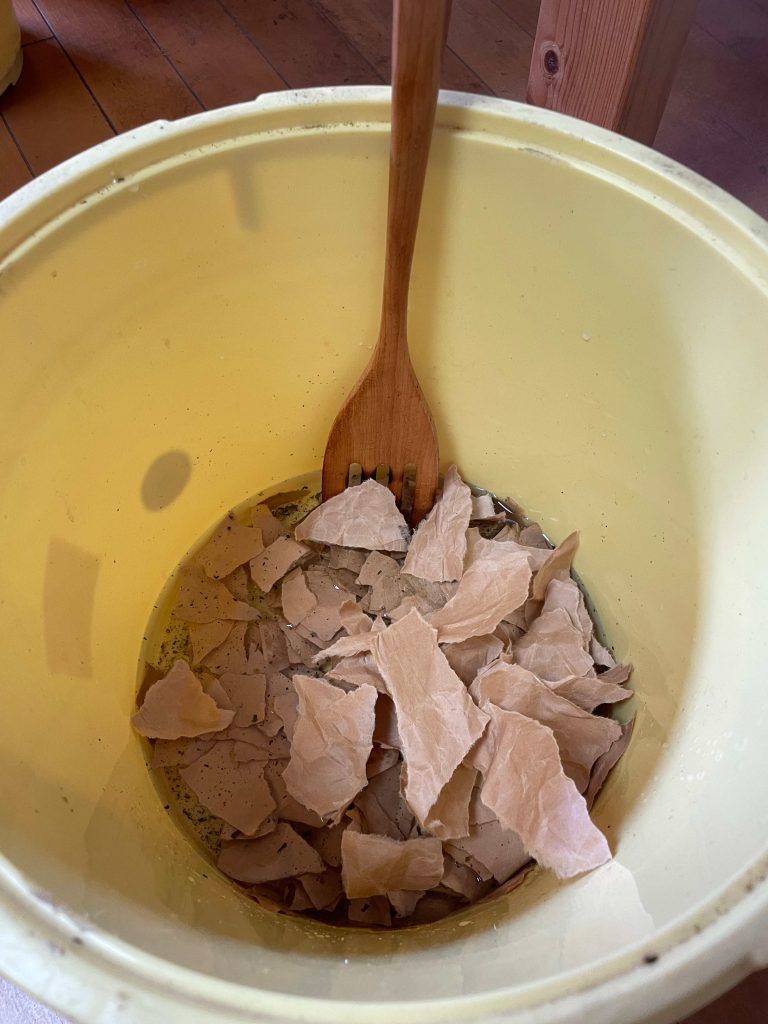
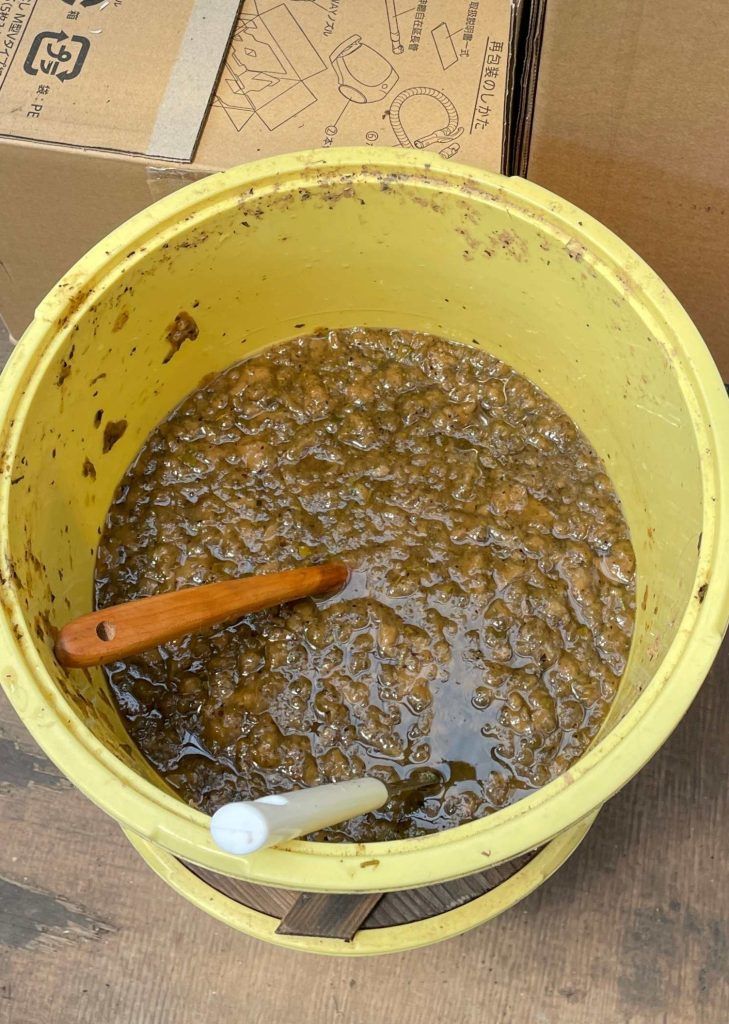
The tea leaves for my project I collected from tea tour and first just intermixed (Sencha, Hōjicha, Matcha, Wakōcha) and blended into smaller pieces for a more even finish. Now it was more like Broken tea than loose leaf.
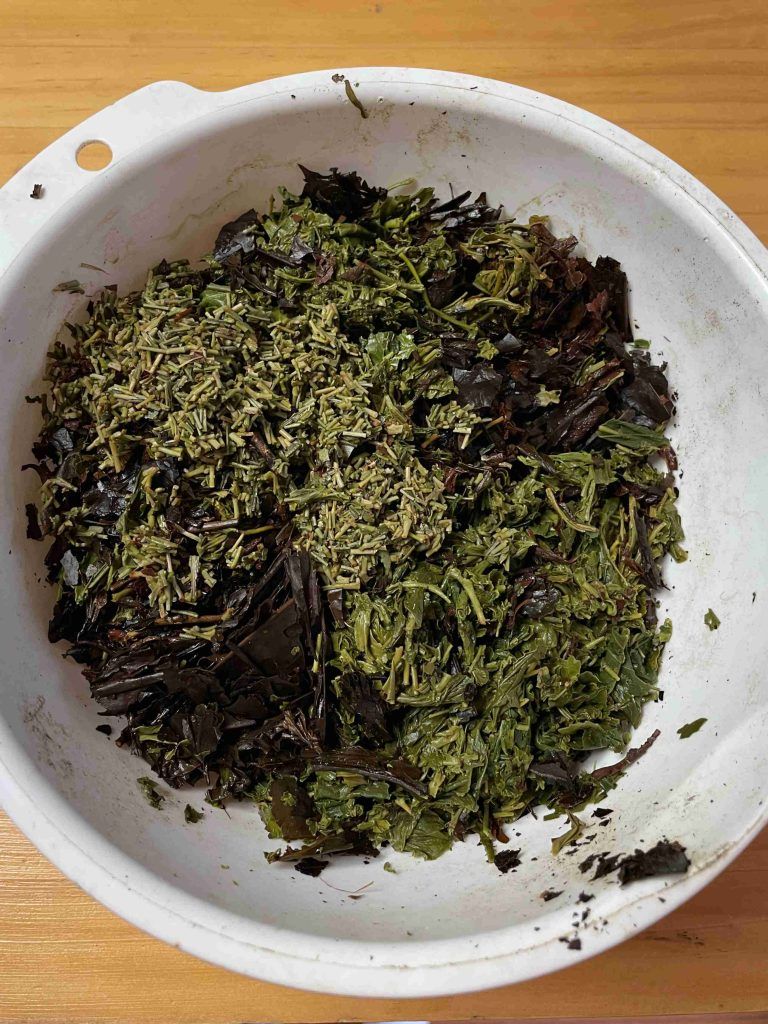
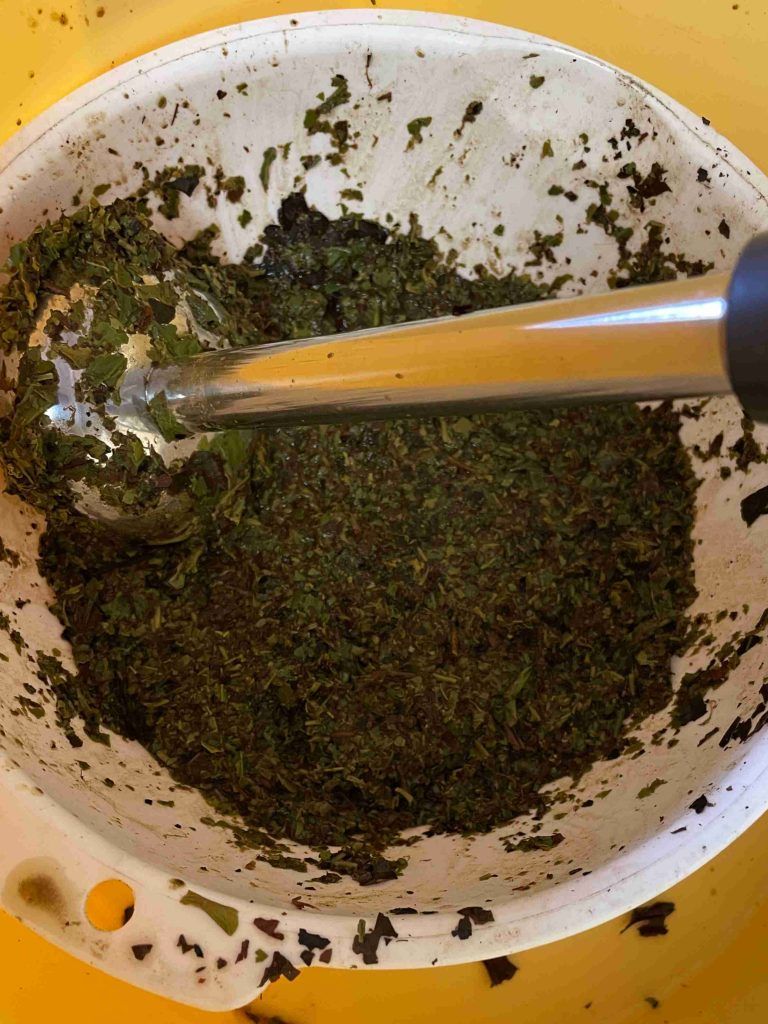
I prepared my little witch’s kitchen outside Houjicha house in a roofed outdoor kitchen. I collected some of the (used) white cotton clothes used here for all kinds of cleaning and drying work as well as some of the iconic yellow buckets for sakura flowers, still smelling nicely. And I bought the few things I additionally needed: A frame with a mosquito net inside, a hand blender and a cloth line.
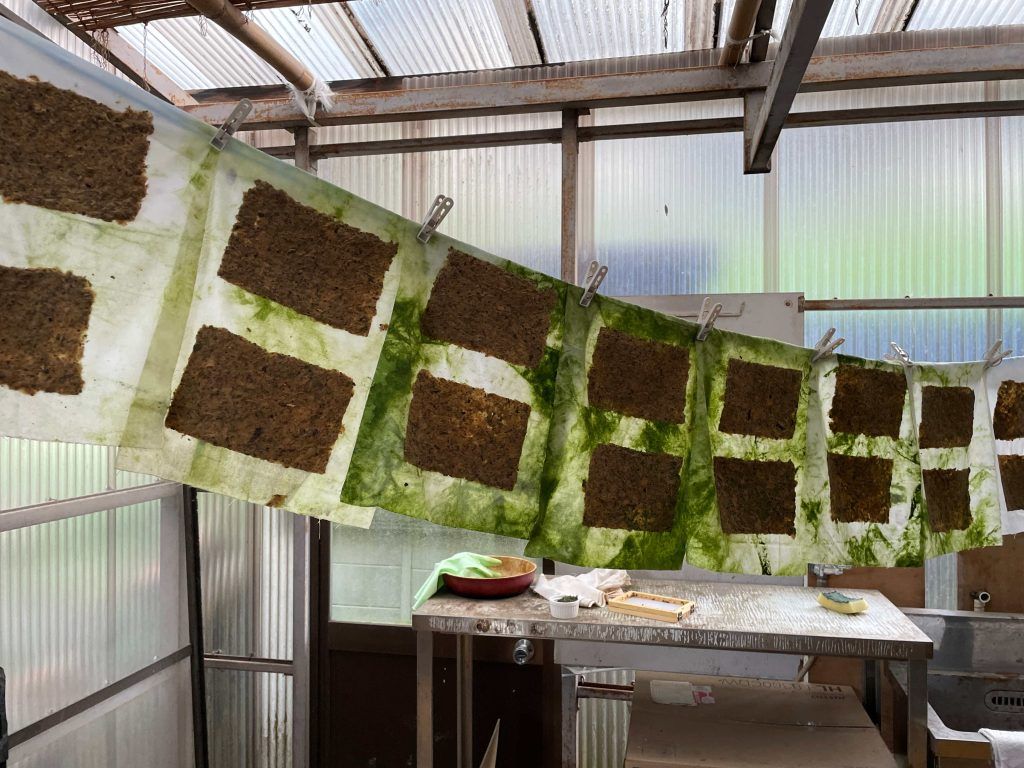
Going to work: I used a big tub to mix in it the paper with water and tea so I could collect this pulp out of it with my frame. I played around with the right mixture: In my first tries I used too many tea leaves, making the paper more spiky and unwritable and also less stable. So I learned to use way less tea, probably using 2 ladles of paper pulp per 1L of water (mainly depending on the tub/bowl used for paper making) in combination with 1 ladle of tea. Stirring the water up, putting the frame in and trying to evenly collect material over its surface while slowly taking it up. Then I let most water drop down, took the frame over to a prepared cloth on a surface and flipped it over on it, so the paper laid on the cloth. I dabbed the backside of the frame (the mosquito net) with a sponge, then lifted the frame–ideally, the paper should stay on the cloth so that it can be easily be hung up for drying. I did some fixing work for an even appearance, then used the frame for the next batch.
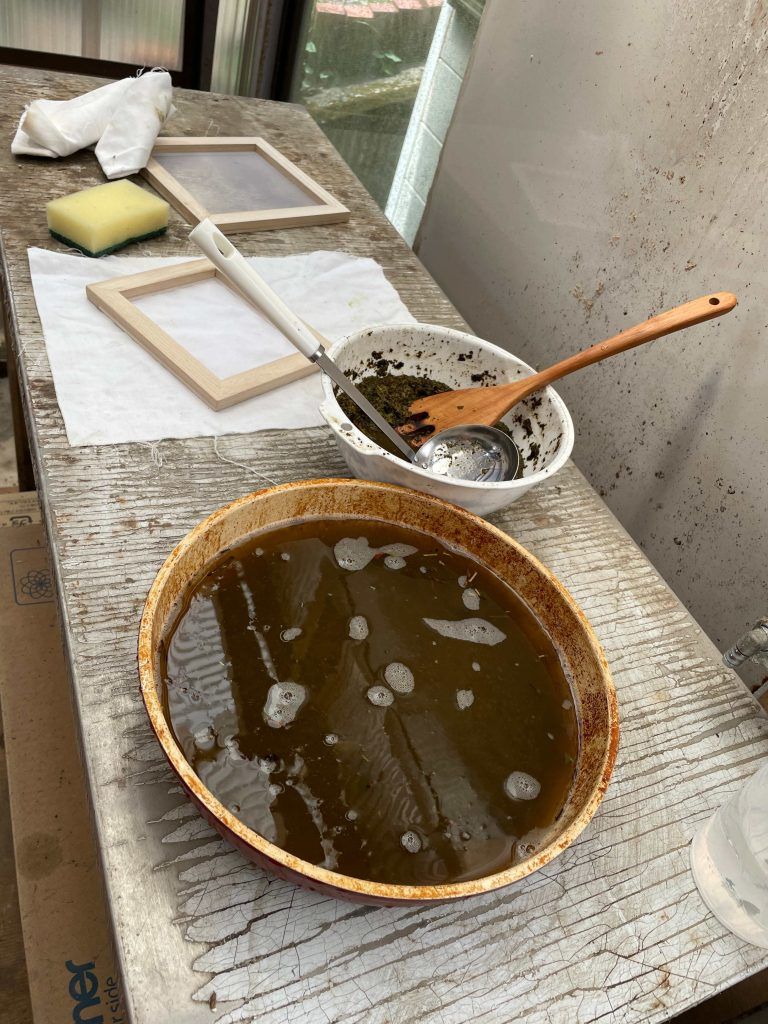
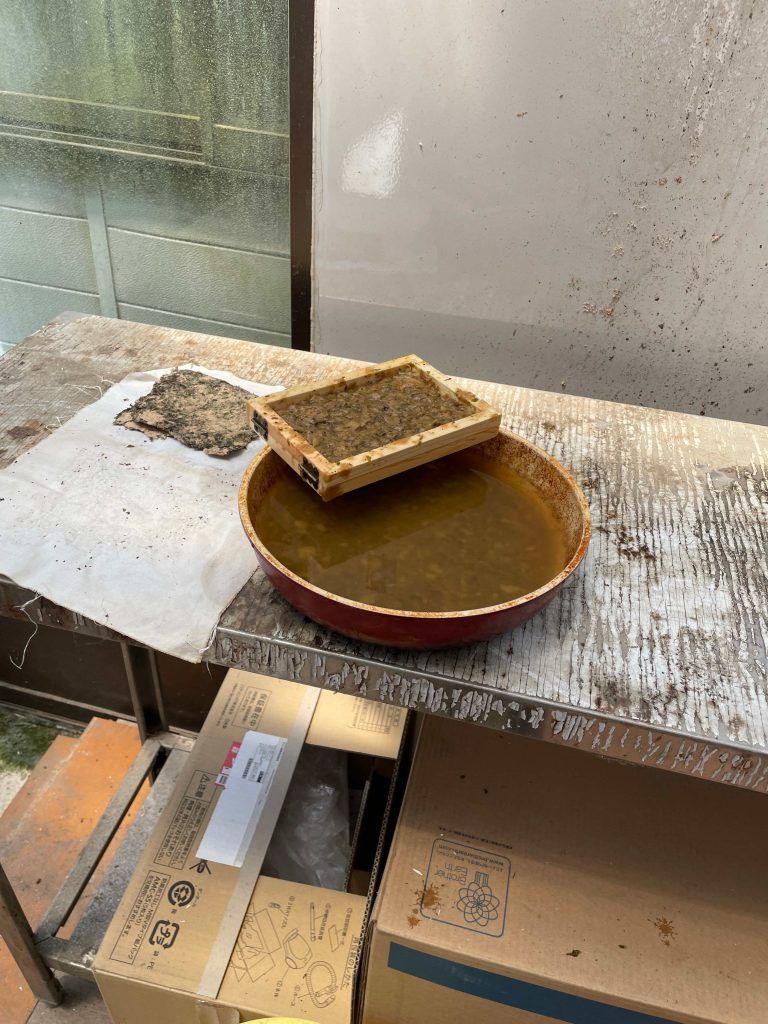
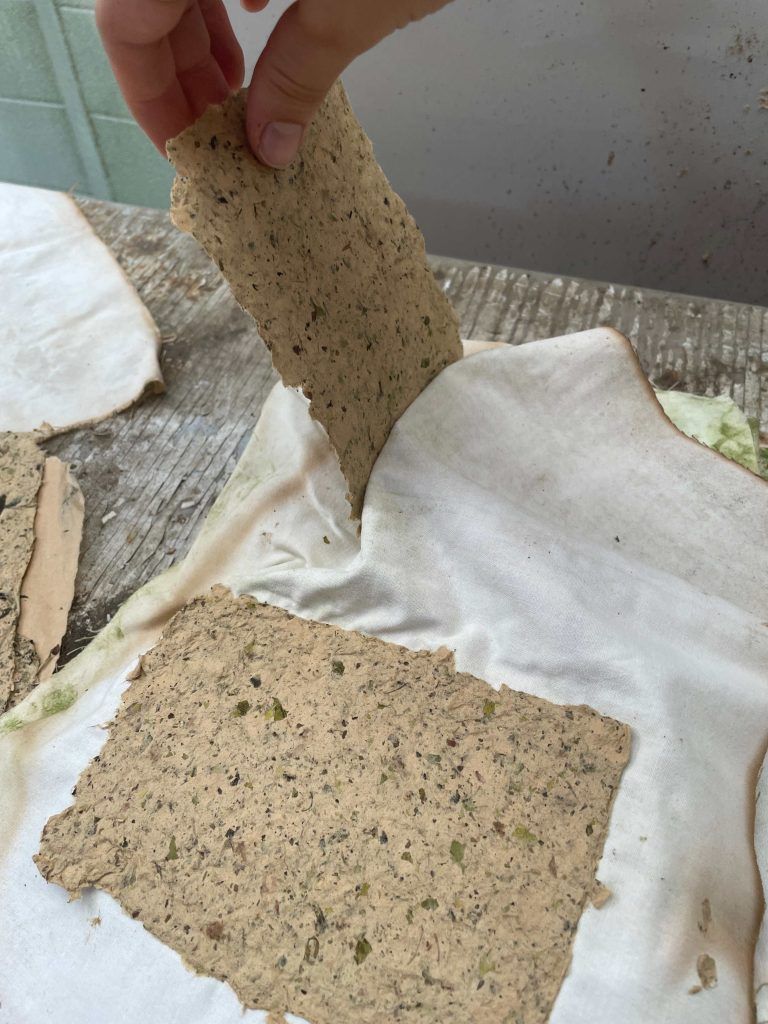
The papers needed to dry properly for about six hours. Then, when fully dried, you can just gently take them off the cloth. Afterwards, they always had to be ironed a bit, so I tried to put some weights on them after taking them down. Before, their corners were curling up; now they were a bit more even.
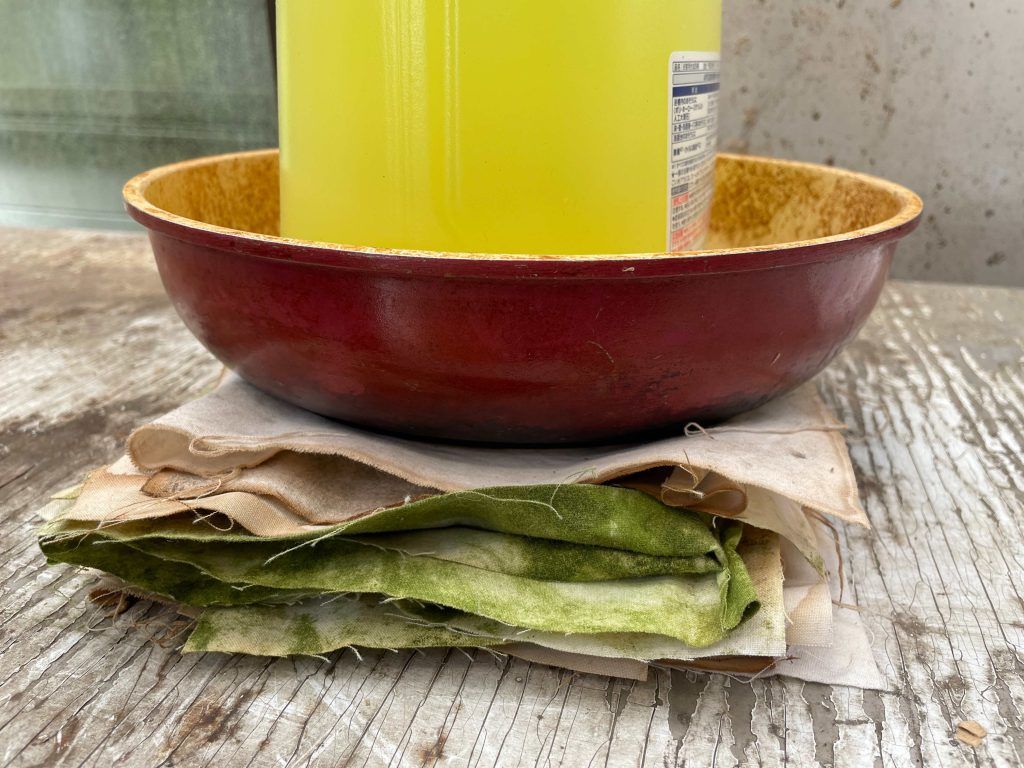
And this is the mystery of DIY teapaper making!
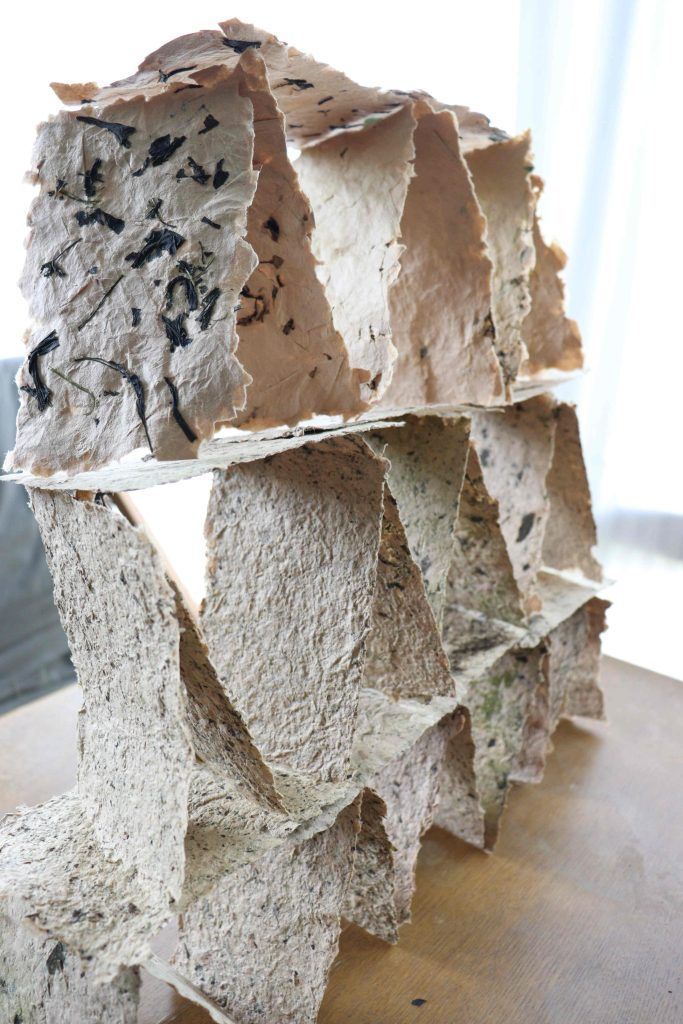
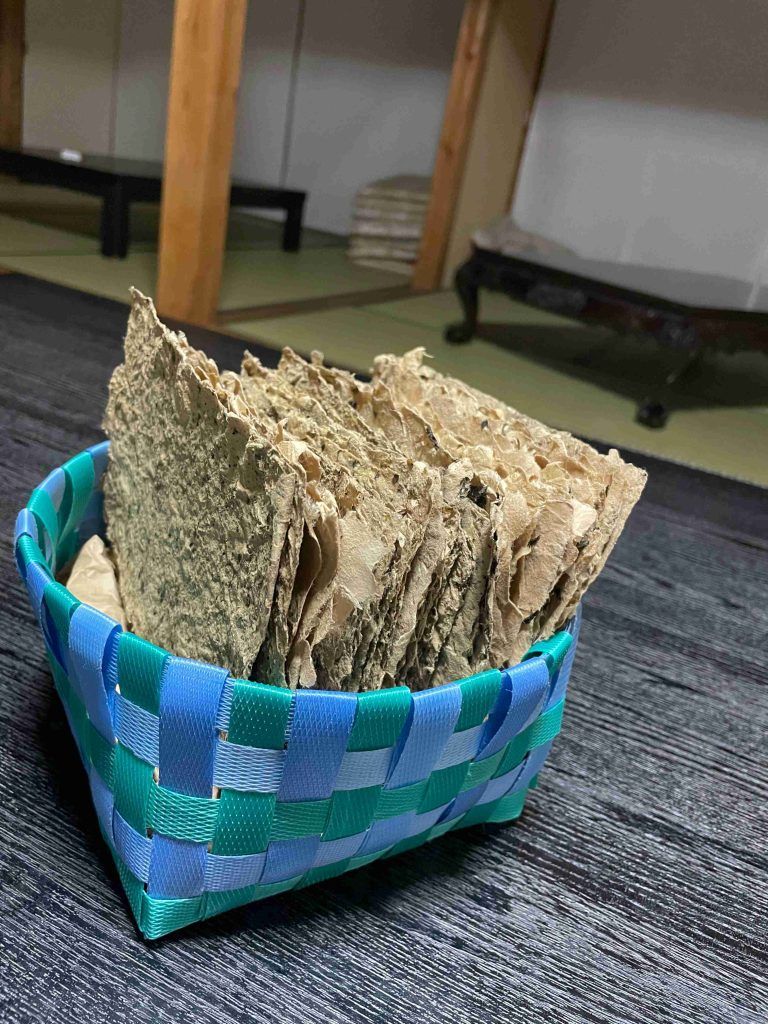
For Version 2, I tried some more with an unblended paper, hoping that with time the bag would disintegrate by itself in water, but it was quite happy in its scraps after one week, so I produced this second batch of tea paper I like to call mosaic style. With a lot of around 1x1cm pieces of paper it got way trickier to collect an even amount on my frame. Therefore, I had to just put the pieces by hand on the frame. A very slow process. Since I wanted to put whole tea leaves inside, I needed to put them mostly under a blanket of paper, so they would stay connected and not fall off after drying. This could also be seen quite nicely in the pictures.
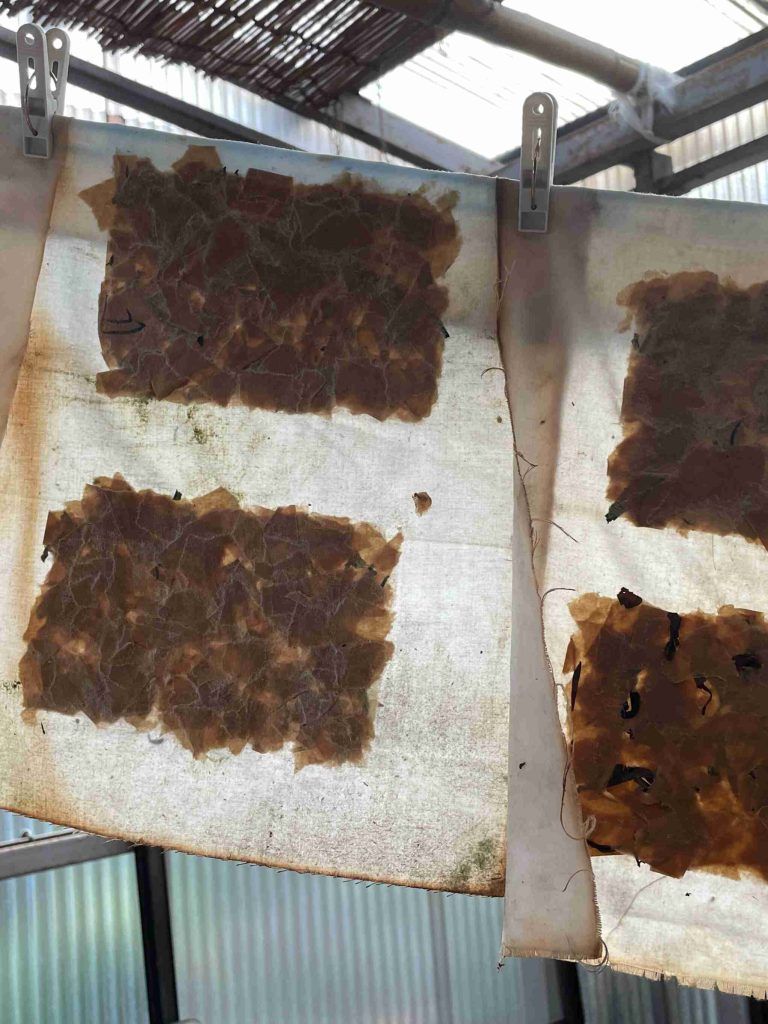
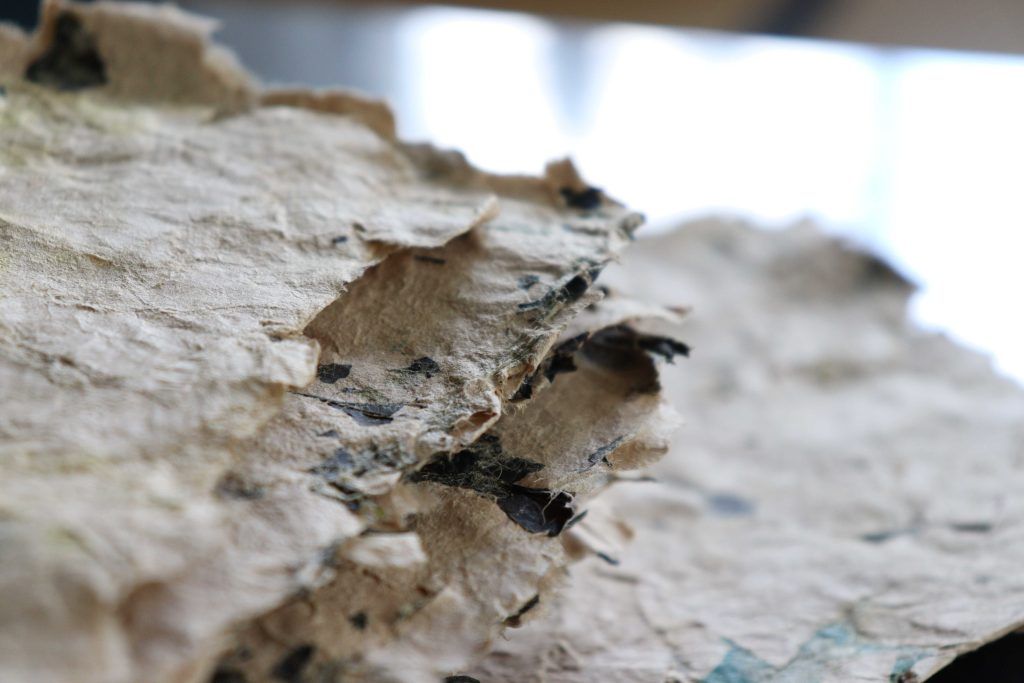
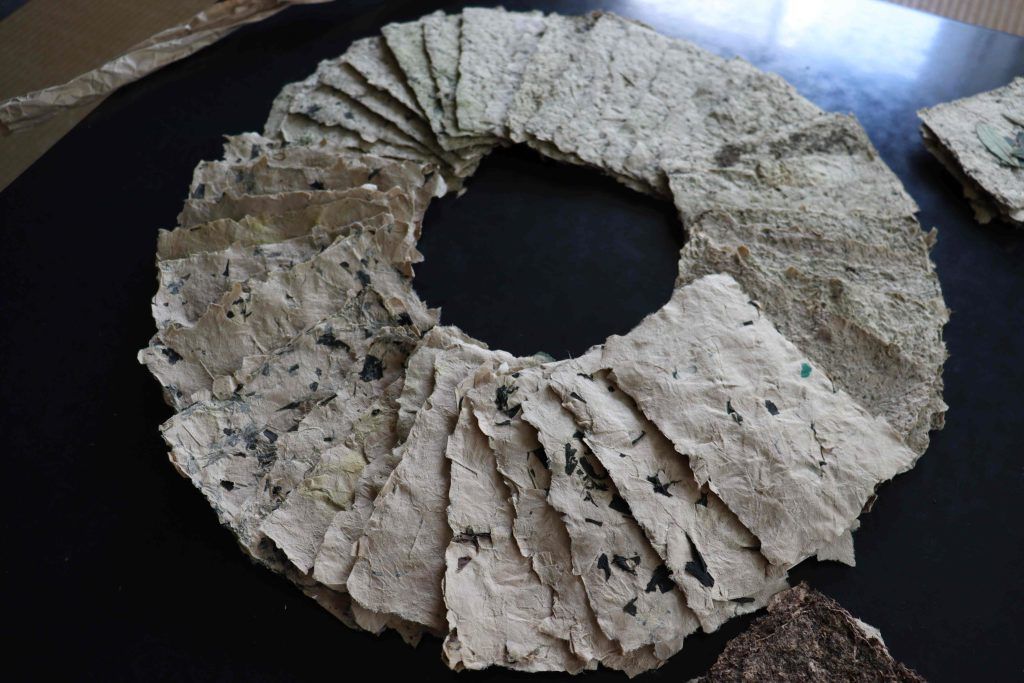
There is also Version 2.1, where I used some dry sample tea leaves, which then brewed inside the paper, putting some yellow shades on the papers as well. But the leaves themselves are not really visible. A bit like a teabag, hiding its magic invisible in itself.
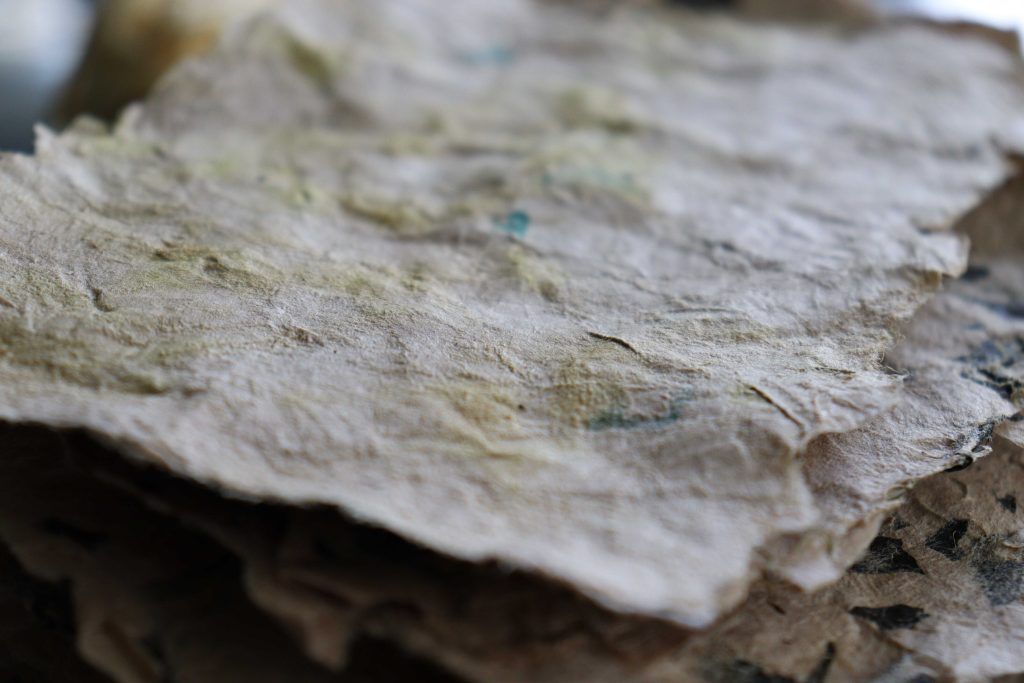
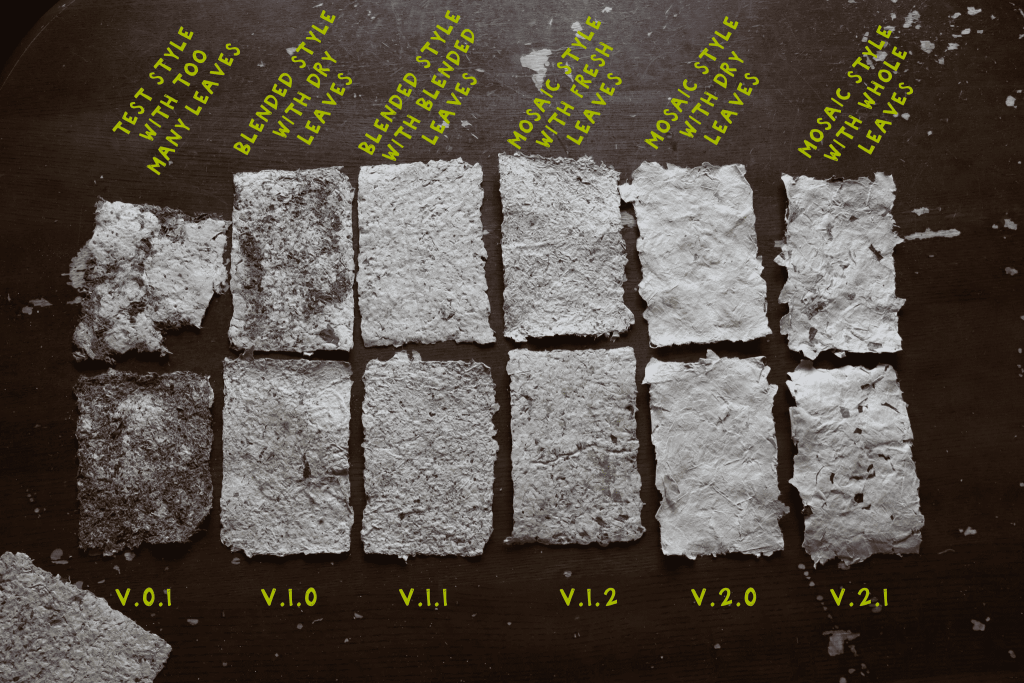
And so, since my paper also passed the writing exam, it is ready to go out in the world and help bring Japanese tea to the world! They will go to the Obubu shop as a limited edition, so you can get them in Wazuka for yourself to use as postcard, paper for letters, Wagashi paper in tea ceremony or paper for painting.
It was a really nice process, and it is easy to remake it back home. So, the next time you clean your teapot after drinking tea and think about throwing the leaves out, maybe keep them instead and make another special (flat) brew of tea.
